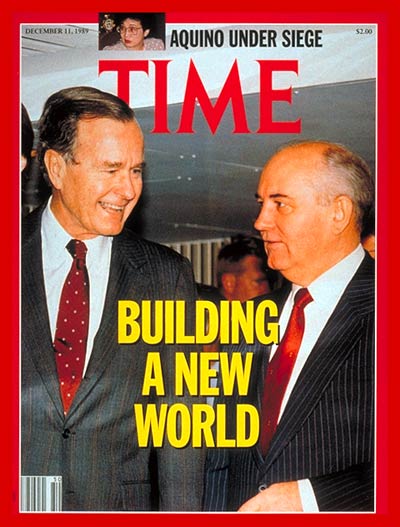Wednesday, February 1, 2017
House of Cards:
The Collapse of the 'Collapse' of the USSR

Supreme Soviet of the Soviet Union officially 'dissolved'
the USSR on December 26, 1991. No verification program
ensued throughout the remainder of Bush's term, ending
January 20, 1993.
Contrary to the reports the Marxist co-opted West avalanched its populations with from 1985-1991, that the political system within the USSR was ‘collapsing’, Soviet Communist Party membership was increasing, not decreasing as the West’s public were misinformed.1 Even so, the West refused to verify the 'collapse' of the USSR, even though the West's survival depends on verification should the 'collapse' be a ruse, which proves the Marxist co-option of the West since a non co-opted West would have immediately verified the 'collapse'...quod erat demonstrandum.
KGB defector Major Anatoliy Golitsyn was the only authority in the West directing our attention to the Soviets manipulation of communist party membership:
The 'perestroika' strategy demands a widening of the scope of the Party's political activity and an increase in its effectiveness. The Party has introduced and is practising a greater degree of inner-Party democracy, which is vital to the successful conduct of the strategy. Official and unofficial Soviet statements have referred to resignations from the Party, to an overall loss in its membership and even to the possibility of its long-term disintegration. The New York Times of 4 November 1990, quoting the Central Committee paper 'Glasnost', gives a decline in membership of from over 19 million to 17.7 million. A more reliable figure can be derived from the representation at the Party's 1990 Congress. This was attended by 4,700 delegates each representing 5,000 Party members - indicating a total membership of 23.5 million, a figure consistent with the increase in the strength of the Central Committee from over 300 to 412 members. The Party remains the best organised force in the USSR. Together with the Presidency and the Government, it guides and controls the process of political and economic reform, the introduction of a 'multi-Party system', the secret policy coordination with the 'independent' governments and 'nationalist' forces in the Republics and the political offensive against the West. Like the Party, the Komsomol has increased its strength and widened its role in the support of the strategy. Its membership probably exceeds 40 million. The Party and Komsomol have close ties with the trade unions, the unions of creative workers and the 6 million vigilantes who assist the Ministry of the Interior and the militia in the policing of the population of the larger Soviet cities. Their existence and their role have been important factors rendering possible the introduction and control of Soviet 'democratisation'.
This researcher confirms Golitsyn’s main argument of a growing Soviet communist party membership:
The 27th Congress of the Communist Party of the Soviet Union, held from 25 February to 6 March 1986, was attended by 4,993 delegates, each delegate representing 3,670 party members, giving a total number for communist party membership of 18,324,310. The next year, 1987, party membership would climb above 19 million members, maintaining that 19 million count up to February 1990. By July 1990 the number had increased to close to 20 million, and “over 20 million “ by the time of the ‘collapse’ of the USSR on December 26, 1991. Contrary to spurious reports of the party’s bleeding - throughout the period known as ‘glasnost’ - the party was experiencing continued growth. While this researcher can’t locate Golitsyn’s representation/delegate number of 5,000 for the 28th Congress, which assists in providing the 23.5 million communist party membership number (4,700 X 5,000 = 23,500,000) Golitsyn said existed in late 1990,2 we do know that contrary to the Soviet lies regurgitated by the West’s media that the party was disintegrating, in fact the party was strengthening, consistently increasing its numbers throughout the period of ‘glasnost’.
-------------------------------------------------------------------------------------
(1) “In 1990 membership was reported to have fallen by some 14 percent, with disillusionment with the results of the party Congress being a significant element here; in the Russian Republic, 1,280,000 were said to have left the party organization. According to a report from the CC Secretariat in May 1991, 1,800,000 people had left the party in 1990, whereas in the first quarter of 1991 587,000 had left. Even gloomier figures were given by Gorbachev at the July 1991 plenum: he said that the party had fallen by 4.2 million people in the eighteen months from the beginning of January 1990, a reduction of 21.8 percent.”
(2) Golitsyn rounded off 4,657 to 4,700, which rounding also assists in arriving at the higher count of precisely 23,500,000 communist party members.

Comments
Post a Comment